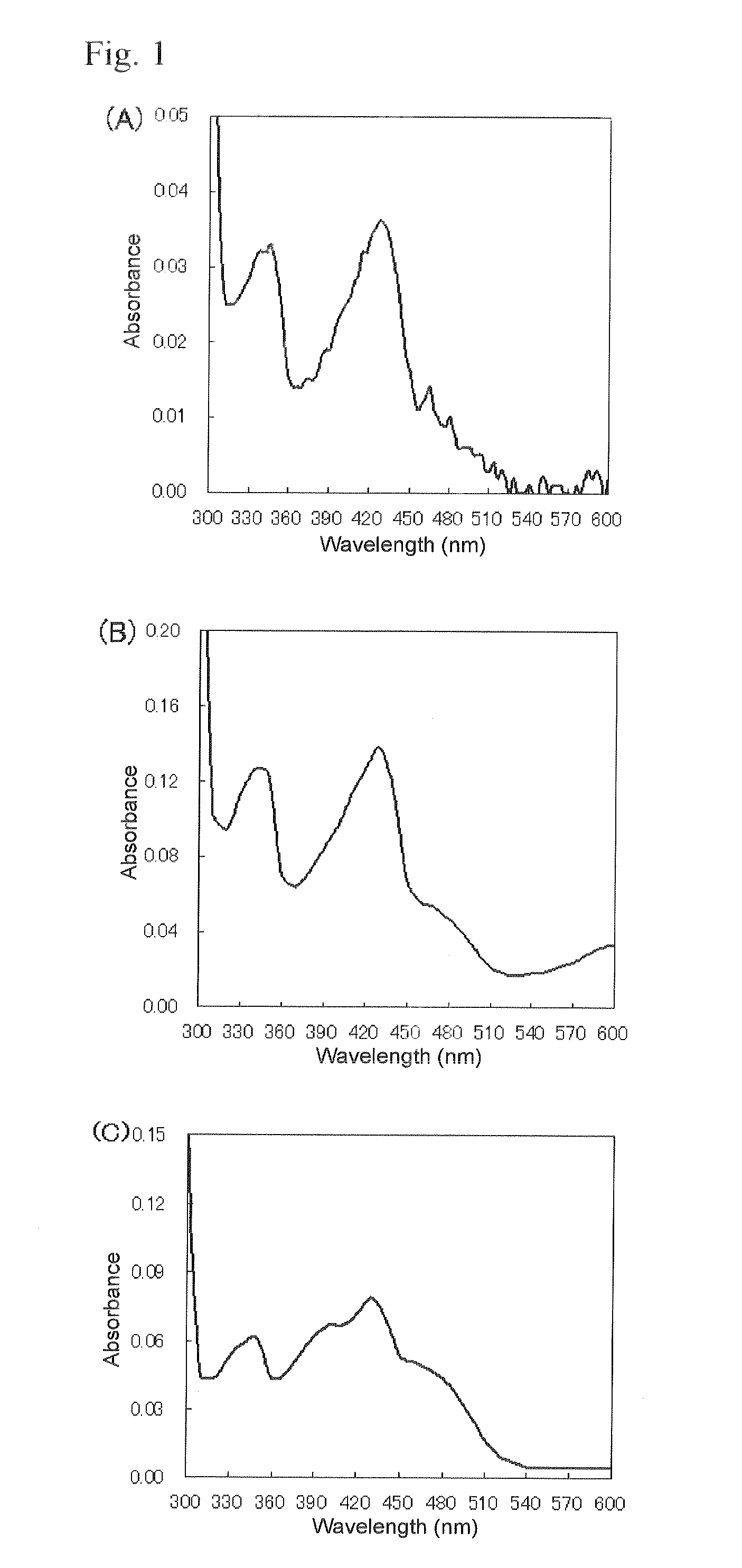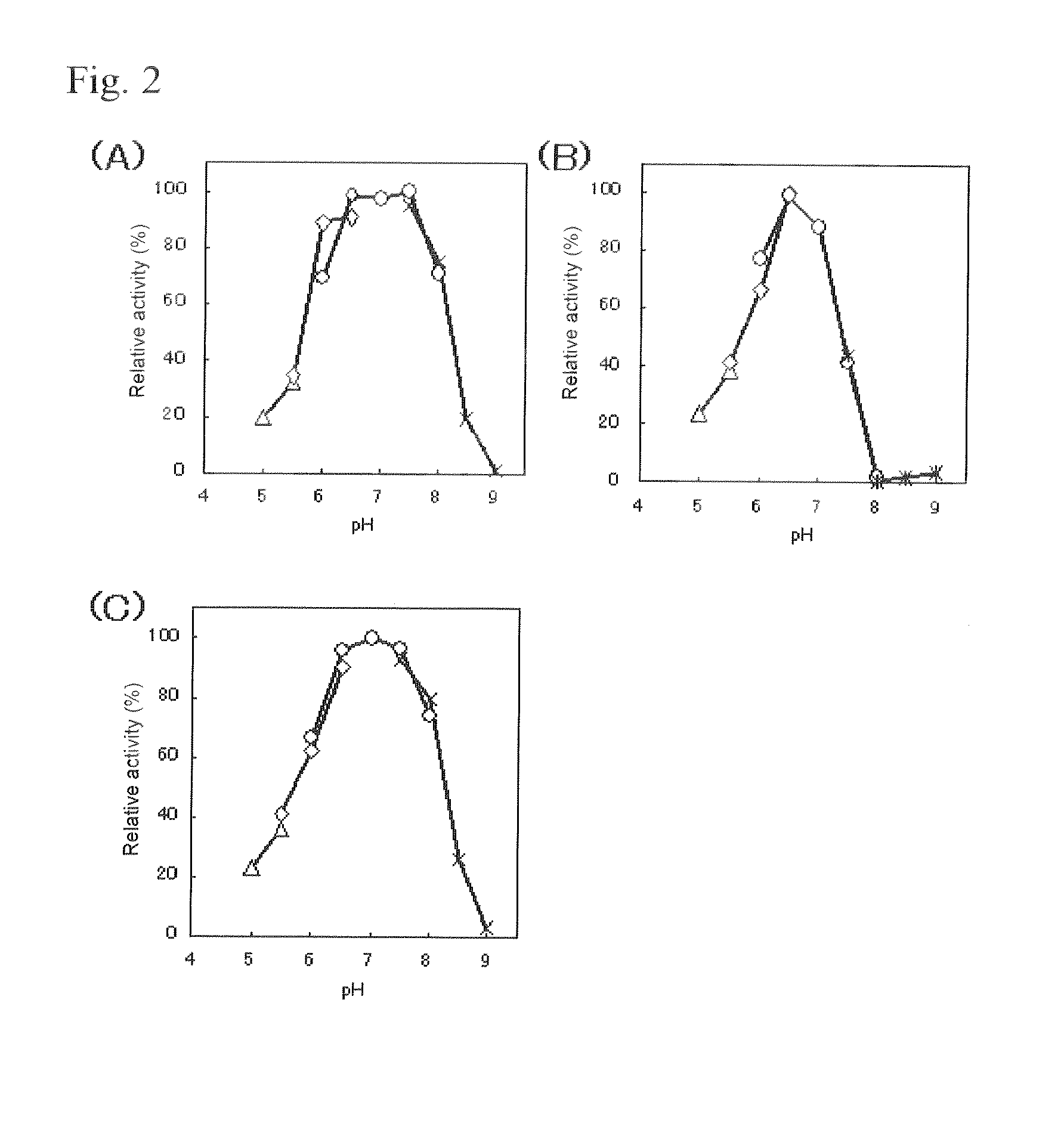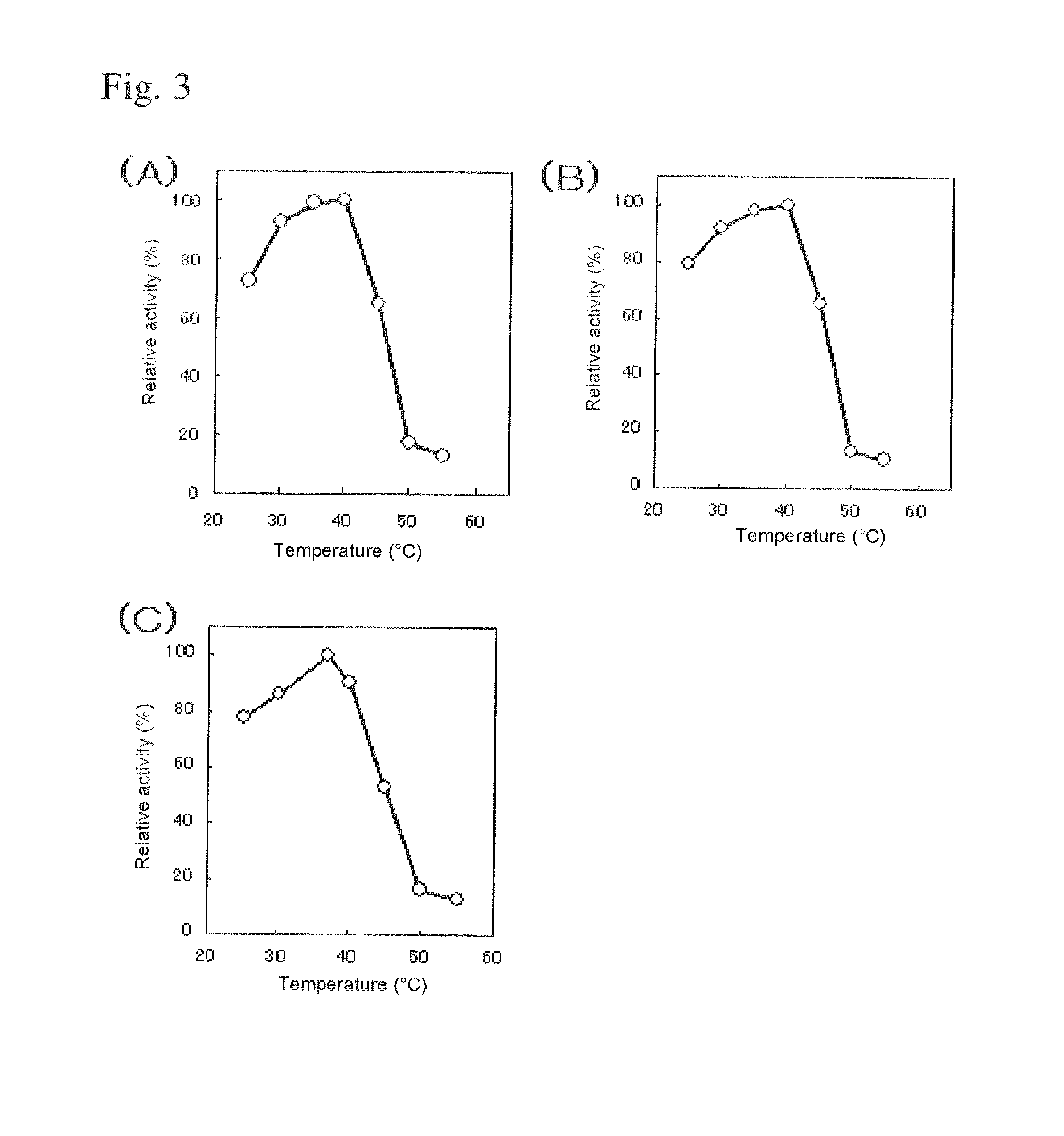Flavin-binding glucose dehydrogenases
a technology of glucose dehydrogenase and flavin, which is applied in the field of flavin-binding glucose dehydrogenase, can solve the problems of poor enzyme stability of gdh, inability to obtain accurate measured values, and interference with precise measurement values, etc., to achieve accurate blood glucose level measurements and accurate measurement of d-glucose levels
- Summary
- Abstract
- Description
- Claims
- Application Information
AI Technical Summary
Benefits of technology
Problems solved by technology
Method used
Image
Examples
example 1
Obtaining Flavin-Binding GDH of the Invention
1. Screening of GDH-Producing Cells
[0089]GDH-producing cells were screened from among strains separated from the natural environment and approximately 500 stored strains allotted from a culture collection institution (Noda Industrial Science Laboratory). Each test strain was seeded in 3 ml of malt extract culture medium (2.0% malt extract, 2.0% D-glucose, 0.1% polypeptone, pH 6.0), and shake cultured for 3-5 days at 30° C. The culture solution was centrifuged at 800×g for 10 minutes, and the cells were obtained as a precipitate. The cells were then suspended in 10 mM acetate buffer (pH 5.0) and mashed in a Multi-Beads Shocker (product of Yasui Kikai Corp.) (2,000 rpm, 60 seconds, 16 times), and then centrifuged at 4° C., 20,000×g for 10 minutes, and the recovered supernatant was used as a crude enzyme solution.
2. Confirmation of GDH Activity
[0090]Each solution was combined by the procedure described below, and the absorbance was measured ...
example 2
Purification of Flavin-Binding GDH from Genus Mucor
[0094]After placing 0.1 L of culturing medium (2.0% yeast extract 4% glucose, pH 60) in a 0.5 L volume Sakaguchi flask, Mucor prainii NISL0103, Mucor javanicus NISL0111 and Mucor circinelloides f. circinelloides NISL0117 pre-cultured on plate culture medium were seeded therein to approximately 1 cm2 portions and subjected to rotary shake culture for 2 days at 30° C., 130 rpm. These were used as seed cultures, and seeded at 0.2 L each into 20 L of the aforementioned culture medium placed in 30 L-volume jar fermenters (2 jar fermenters) and cultured for 3 days at 30° C., 200 rpm, 0.5 vvm. Upon completion of the culturing, 40 L of culture solution was filtered with a filter cloth and the cells were recovered. The obtained cells were then suspended in 10 mM acetate buffer (pH 5.0).
[0095]The cell suspension was conveyed into a Dyno-Mill (150 ml / min) for mashing and then centrifuged at 6,000 g for 30 minutes, and the supernatant was reco...
example 3
Examination of Enzymo-Chemical Properties of Mucor-Derived Flavin-Binding GDH Enzymes
[0097]The properties of the purified GDH enzymes obtained in Example 2 were examined.
(a) Absorption Spectrum Measurement
[0098]MpGDH, MjGDH and McGDH were dialyzed against 10 mM acetate buffer (pH 5.0), and their absorption spectra at 250-800 nm were measured with a spectrophotometer U-3010 (product of Hitachi High-Technologies Corp.). The measurement results are shown in FIG. 1 (FIG. 1(A) is the absorption spectrum for MpGDH, FIG. 1(B) is the absorption spectrum for MjGDH, and FIG. 1(C) is the absorption spectrum for McGDH). All of the GDH enzymes were confirmed to have two peaks exhibiting maxima near a wavelength of 340-350 nm and a wavelength of 420-430 nm, and since this absorption spectral shape is characteristic of flavin enzymes, the results strongly suggested that the GDH enzymes of the invention are flavin-binding proteins.
(b) Measurement of GOD Activity
[0099]The GDH activity and GOD activi...
PUM
| Property | Measurement | Unit |
|---|---|---|
| Temperature | aaaaa | aaaaa |
| Temperature | aaaaa | aaaaa |
| Fraction | aaaaa | aaaaa |
Abstract
Description
Claims
Application Information
 Login to View More
Login to View More - R&D
- Intellectual Property
- Life Sciences
- Materials
- Tech Scout
- Unparalleled Data Quality
- Higher Quality Content
- 60% Fewer Hallucinations
Browse by: Latest US Patents, China's latest patents, Technical Efficacy Thesaurus, Application Domain, Technology Topic, Popular Technical Reports.
© 2025 PatSnap. All rights reserved.Legal|Privacy policy|Modern Slavery Act Transparency Statement|Sitemap|About US| Contact US: help@patsnap.com



